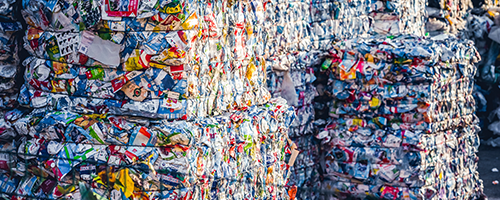
The Drivers Shaping the Plastics Industry in 2025
February, 2025
Plastics have become a defining feature of the modern world, with global production of thermoplastics expected to surge to 590 million metric tons by 2050. Alarmingly, 91% of the world's plastic waste isn't recycled, leading most of it to end up in incinerators or landfills. However, plastic recycling has grown significantly worldwide over the past two decades as awareness of its environmental impact has increased. Recycling plastic has become crucial in creating a more circular economy, which helps reduce reliance on landfills, conserve resources, and protect the environment from pollution.
What factors are currently shaping the plastic recycling industry, and why is plastics recycling filtration crucial in this process? Understanding these influences is essential for grasping the complexities of plastic recycling and the significance of effective filtration systems in ensuring the quality and sustainability of recycled materials.
What is driving advances in plastic recycling in 2025 and beyond?
The transition to a circular economy is a priority for many countries worldwide, with plastics recycling contributing to the 3 R’s: Reduce, Reuse, and Recycle. According to the Plastic Recycling Global Market Report 2025, this market is projected to expand from $44.88 billion in 2024 to $67.58 billion by 2029, reflecting a compound annual growth rate (CAGR) of 8.6%. Here are the key factors influencing market growth:
Navigating Plastic Waste Regulations
The growing urgency to achieve sustainability objectives has led to the implementation of stricter regulations concerning plastics and plastic waste globally. For instance, the European Union has set ambitious recycling targets for packaging materials. By 2025, the goal is a 70% recycling rate overall, with specific targets of 55% for plastic and 85% for paper and cardboard. A proposal for the Packaging and Packaging Waste Directive (PPWD) mandates 30% recycled content in contact-sensitive PET packaging and single-use plastic beverage bottles by 2030, and 10% in other plastics. Additionally, at least 35% recycled material is required for other plastic packaging. By 2040, these goals will tighten to 50% recycled content for contact-sensitive plastics, 65% for single-use bottles, and 65% for other types of plastic packaging.
Challenges:
There is still resistance regarding the potential financial implications of new regulations and taxes. Many are concerned about how these directives will be implemented and the legislation's effectiveness. This situation raises important questions about the overall economic impact on production and the industry's capacity to adapt to the evolving regulatory landscape. As a result, manufacturers are grappling with the feasibility of absorbing increased costs or passing them on to consumers.
Pioneering Plastic Innovations
Innovation is essential for advancing plastic recycling, and supporting regulation and investment is a key component of a circular economy. The increase in investment in this sector allows manufacturers to adopt cutting-edge technological solutions designed to meet strict legislative targets. These advancements contribute to the cost-effective production of high-quality, safe plastic materials.
One notable innovation is the process of pyrolysis, which involves the thermal decomposition of waste plastic in an inert (oxygen-free) atmosphere. This technique enables processors to reclaim the hydrocarbon content of plastic waste as a valuable raw material (pyrolysis oil) and can reduce carbon dioxide emissions by as much as 60% compared to more conventional recycling methods. This reduction presents substantial environmental and economic benefits, enabling a more sustainable approach to plastic waste management. By embracing such technologies, the industry can enhance its recycling capabilities, minimize environmental impact, and support the overarching goals of a sustainable circular economy.
Filtration Strategies Driving the Plastic Recycling Revolution
Filtration is not merely an optional step; it is a fundamental process that significantly influences the overall effectiveness of plastic recycling as it directly impacts the purity and quality of the recycled material. Plastics often contain various impurities and contaminants that can remain in the material even after processing. Their presence degrades the quality of the plastic but can also result in defects in the final products. Ultimately, the absence of thorough filtration can severely limit the applications of recycled materials, rendering them unsuitable for specific products or reducing their market value.
Pyrolysis of plastics is one of the most widely used technologies in chemical recycling processes. However, pyrolysis oil often contains contaminants with complex characteristics which need to be analysed and understood before applying the most appropriate filtration solutions. These can include both particulate and liquid based contaminants.
To learn more about how we can assist in testing and identifying contamination in pyrolysis oil, please visit our website and contact our expert team.
Subscribe to our blog to stay up-to-date on the latest insights and trends
- Category
- Author
- Sort By




